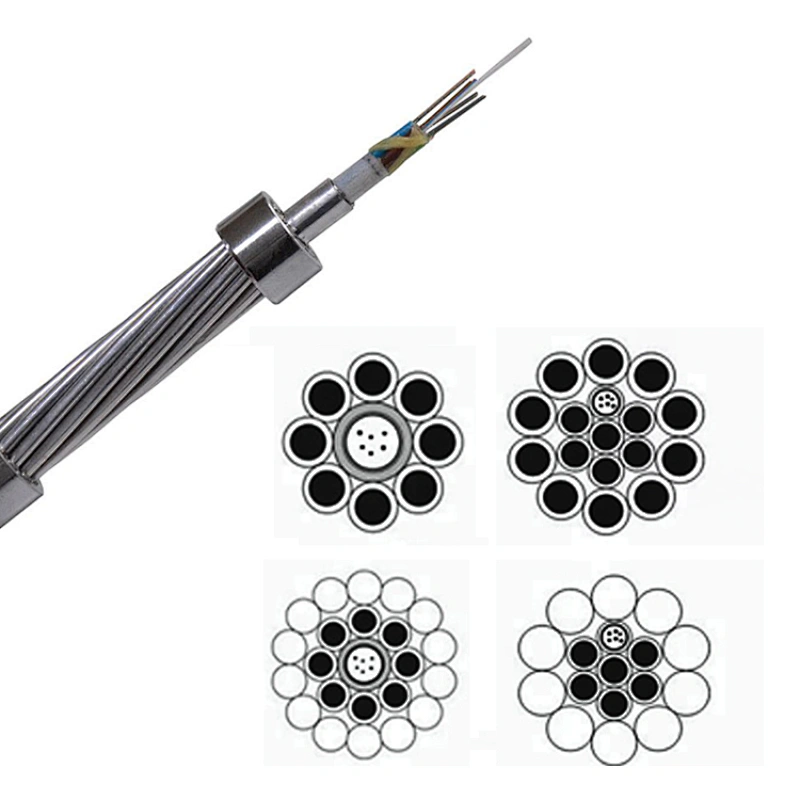As the demand for reliable and high-speed communication networks continues to rise, Optical Fiber Composite Overhead Ground Wire (OPGW) cables play a crucial role in modern telecommunications and power distribution systems. In 2024, understanding the price trends of OPGW cables is essential for utility companies and telecommunications providers. This article analyzes the factors affecting OPGW cable prices and provides insights into the anticipated trends for the coming year.

Key Factors Influencing OPGW Cable Prices
Raw Material Costs
The price of raw materials, particularly aluminum and steel, significantly impacts the cost of OPGW cables. In 2024, fluctuations in the global commodities market, driven by factors such as supply chain disruptions and geopolitical tensions, may lead to increased material costs. For example, if the price of aluminum rises due to reduced supply from key producers, the overall cost of OPGW cables will likely increase.
Demand for Fiber Optic Infrastructure
The accelerating shift toward digital communication and renewable energy solutions has driven up the demand for OPGW cables. As utility companies invest in upgrading their infrastructure to support smart grids and enhance connectivity, the competition for OPGW cables may intensify. This heightened demand can lead to price increases, especially for higher-specification cables with greater fiber counts.
Technological Advancements
Innovations in manufacturing processes and materials are influencing OPGW cable pricing. Manufacturers are increasingly adopting advanced techniques that enhance the performance and durability of OPGW cables, such as improved insulation materials and enhanced optical fibers. While these advancements can lead to higher upfront costs, they may provide long-term savings through reduced maintenance and longer lifespans.
Regulatory and Environmental Factors
Regulations aimed at promoting sustainable practices and reducing carbon footprints may affect OPGW cable production and pricing. In 2024, manufacturers may face additional costs associated with compliance with environmental standards. This could influence the pricing structure of OPGW cables, especially if companies are required to invest in greener manufacturing processes or materials.
Market Competition and Supplier Dynamics
The competitive landscape among OPGW cable manufacturers also plays a crucial role in pricing. In 2024, if new players enter the market or existing suppliers expand their capacities, the increased competition may lead to price stabilization or reductions. Conversely, if there are significant consolidations or supply chain constraints, this could lead to higher prices as suppliers leverage their market positions.
Projected Price Trends for 2024
Given the aforementioned factors, the price of OPGW cables in 2024 is expected to exhibit a mixed trend:
Short-term Price Increases:
In the early part of 2024, prices may rise due to ongoing supply chain challenges and the increased cost of raw materials. For example, the average price for standard OPGW cables could range between RMB 12,000 and RMB 30,000 per kilometer, depending on specifications and fiber counts.
Long-term Price Stabilization:
As manufacturers adapt to market changes and innovations are implemented, there may be a stabilization of prices later in the year. Increased competition and advancements in production efficiencies could mitigate earlier price hikes.
Market Adjustments:
Depending on the global economic situation, market adjustments may occur, impacting the supply and demand balance. If economic growth continues, driven by infrastructure investments and digitalization, sustained demand for OPGW cables could keep prices elevated.

Conclusion
The price trends for OPGW cables in 2024 are influenced by a confluence of factors, including raw material costs, demand for fiber optic infrastructure, technological advancements, regulatory considerations, and market dynamics. As the industry navigates these complexities, stakeholders must remain vigilant and adaptive to changing market conditions. By understanding these trends, utility companies and telecommunications providers can make informed decisions that align with their strategic objectives and budget considerations in the evolving landscape of communication and energy infrastructure.


